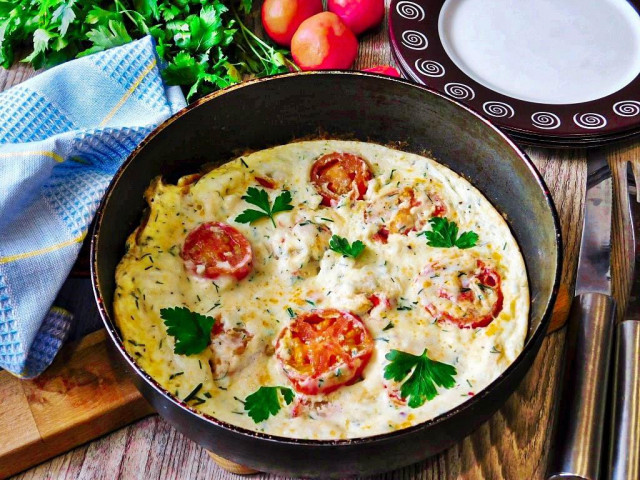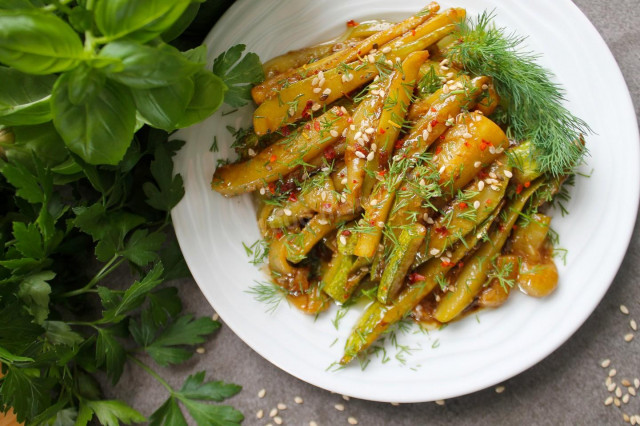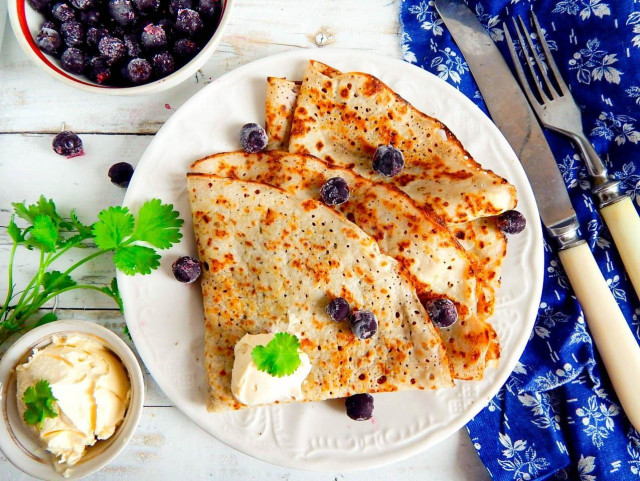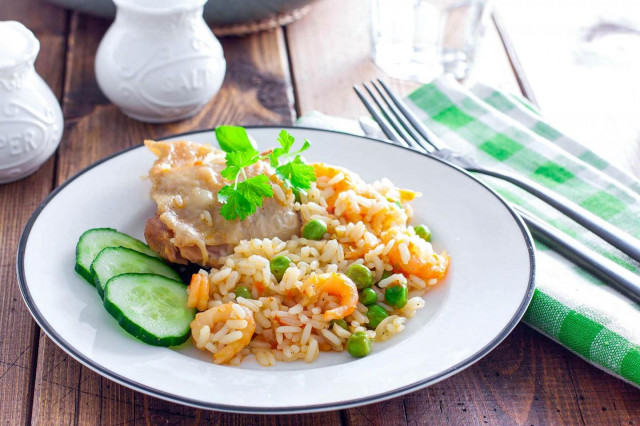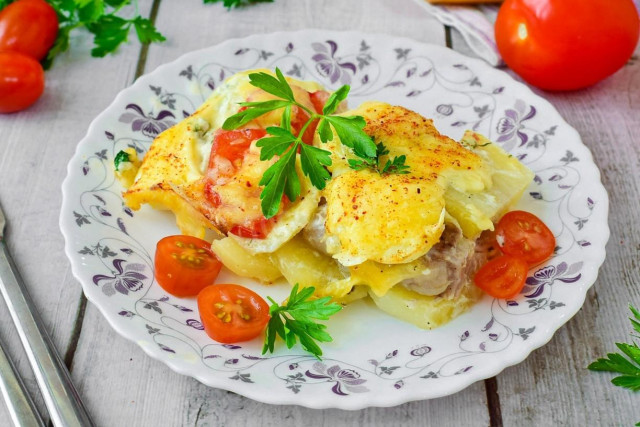Composition / ingredients
Step-by-step cooking
Step 1:
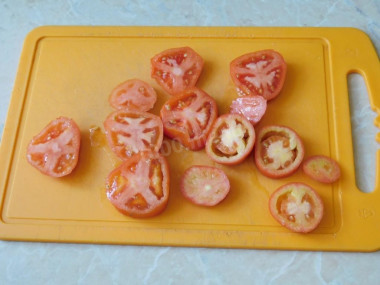
How to make scrambled eggs with tomatoes and cheese? Prepare the products. Take the required amount of tomatoes. If they are medium-sized, then 1-2 pieces will be enough. And if they are small, like mine, then you can take a larger amount. Wash the tomatoes and cut them into circles.
Step 2:
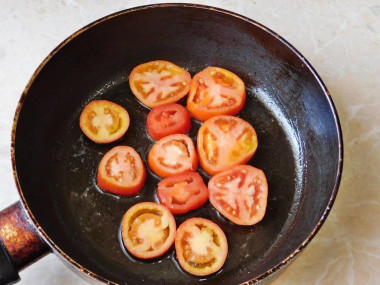
Heat the frying pan over medium heat and pour a little vegetable oil. Put the mugs of tomatoes on a hot frying pan. Fry them for a minute, then turn them over.
Step 3:
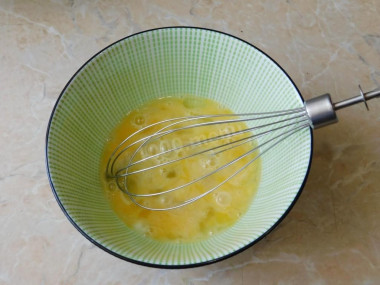
Separately, break the required number of eggs into a bowl. Be sure to wash the eggs before use, as even the seemingly clean shell may contain harmful bacteria. It is best to use food detergents and a brush.
Step 4:
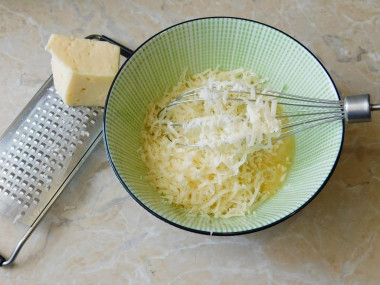
Grate the cheese on a coarse grater immediately into the bowl. Mix it up. Any cheese for this dish is suitable — hard, semi-hard, soft, like mozzarella. The main thing is that it is delicious, high-quality, without milk fat substitutes and melts well.
Step 5:
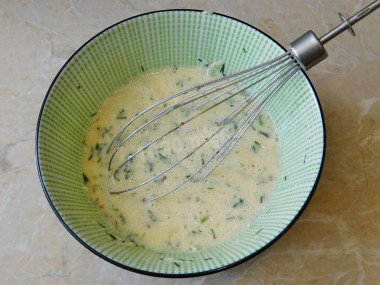
Add chopped herbs and a little salt. Any greens will do — your favorite or the one that is available. Pre-wash it, dry it and remove the thick stems.
Step 6:
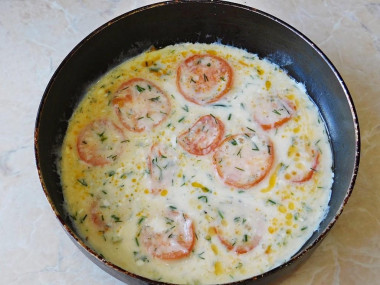
Pour fried tomatoes with egg mixture. Stir a little and cover with a lid. Cook on low heat for 3-5 minutes until cooked — the eggs should fully grasp. Then turn off the heat and leave to stand for 2-3 minutes so that the dish finally reaches. The finished dish can be served directly in the pan. Or you can carefully put it on a plate and serve it to the table. Before serving, sprinkle the scrambled eggs with fresh herbs. Bon appetit!
For a change, such scrambled eggs can be fried with onions, bell peppers, beans, corn or mushrooms. You can add a little milk or cream to the eggs. Any sausage products will make scrambled eggs even more satisfying.
Tomatoes choose juicy, but dense. Soft fruits do not keep their shape well, in the process of slicing and cooking they will spread into a shapeless mass and spoil the appearance of the dish.
Any oils are useful only until a certain temperature is reached - the point of smoking, at which the oil begins to burn and toxic substances, including carcinogens, are formed in it. How to determine the roasting temperature and choose the best oil for frying, and which is better not to use at all, read here .
Important! An incorrectly selected frying pan can ruin even the best recipe. All the details on how to choose the perfect frying pan for different dishes read here .
Caloric content of the products possible in the composition of the dish
- Tomatoes - 23 kcal/100g
- Chicken egg - 157 kcal/100g
- Egg white - 45 kcal/100g
- Egg powder - 542 kcal/100g
- Egg yolk - 352 kcal/100g
- Ostrich egg - 118 kcal/100g
- Dutch cheese - 352 kcal/100g
- Swiss cheese - 335 kcal/100g
- Russian cheese - 366 kcal/100g
- Kostroma cheese - 345 kcal/100g
- Yaroslavsky cheese - 361 kcal/100g
- Altai cheese 50% fat content - 356 kcal/100g
- Soviet cheese - 400 kcal/100g
- Cheese "steppe" - 362 kcal/100g
- Uglich cheese - 347 kcal/100g
- Poshekhonsky cheese - 350 kcal/100g
- Lambert cheese - 377 kcal/100g
- Appnzeller cheese with 50% fat content - 400 kcal/100g
- Chester cheese with 50% fat content - 363 kcal/100g
- Edamer cheese with 40% fat content - 340 kcal/100g
- Cheese with mushrooms of 50% fat content - 395 kcal/100g
- Emmental cheese with 45% fat content - 420 kcal/100g
- Gouda cheese with 45% fat content - 356 kcal/100g
- Aiadeus cheese - 364 kcal/100g
- Dom blanc cheese (semi-hard) - 360 kcal/100g
- Lo spalmino cheese - 61 kcal/100g
- Cheese "etorki" (sheep, hard) - 401 kcal/100g
- White cheese - 100 kcal/100g
- Fat yellow cheese - 260 kcal/100g
- Altai cheese - 355 kcal/100g
- Kaunas cheese - 355 kcal/100g
- Latvian cheese - 316 kcal/100g
- Limburger cheese - 327 kcal/100g
- Lithuanian cheese - 250 kcal/100g
- Lake cheese - 350 kcal/100g
- Gruyere cheese - 396 kcal/100g
- Vegetable oil - 873 kcal/100g
- Salt - 0 kcal/100g
- Fresh frozen soup greens in a package - 41 kcal/100g
- Greenery - 41 kcal/100g

